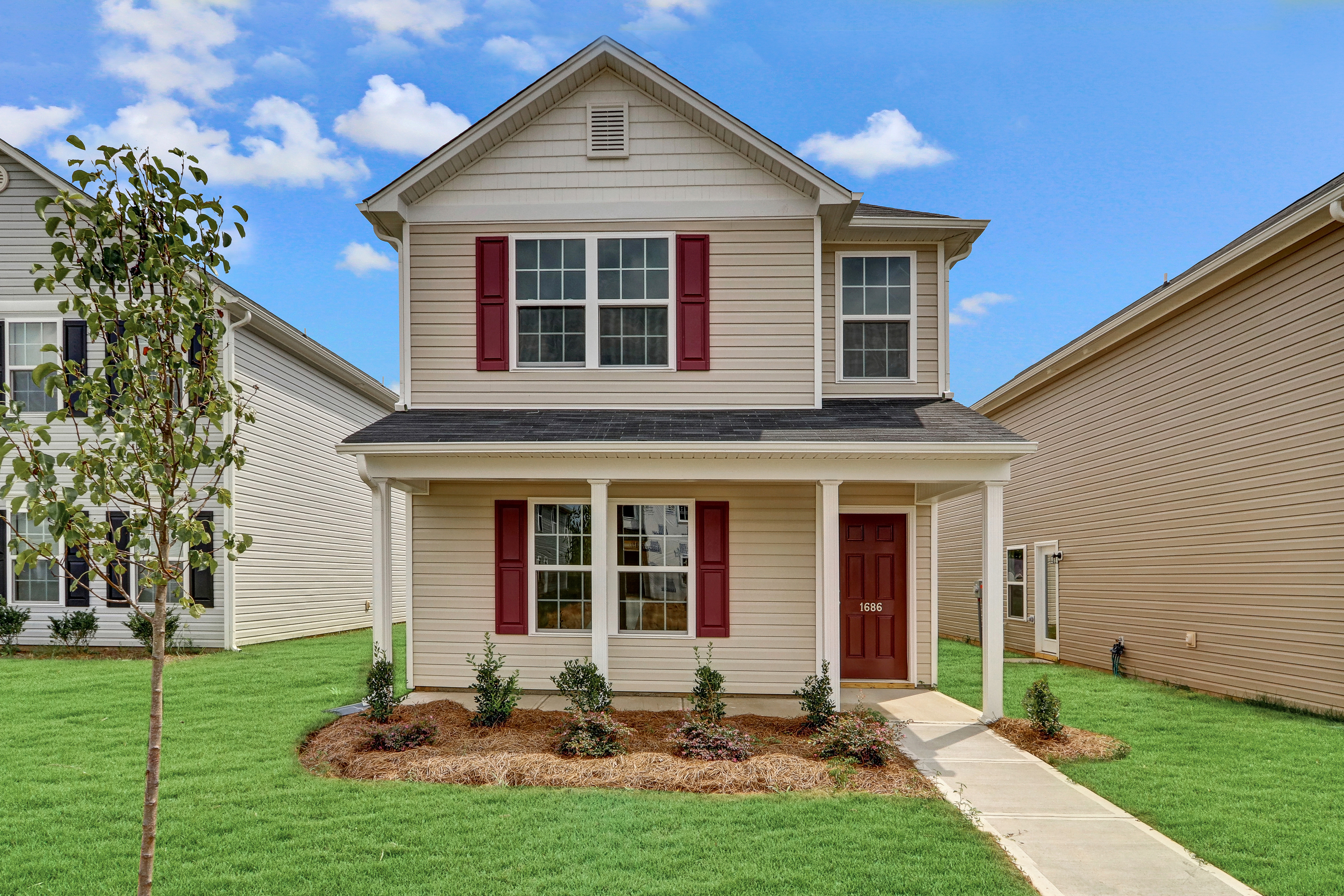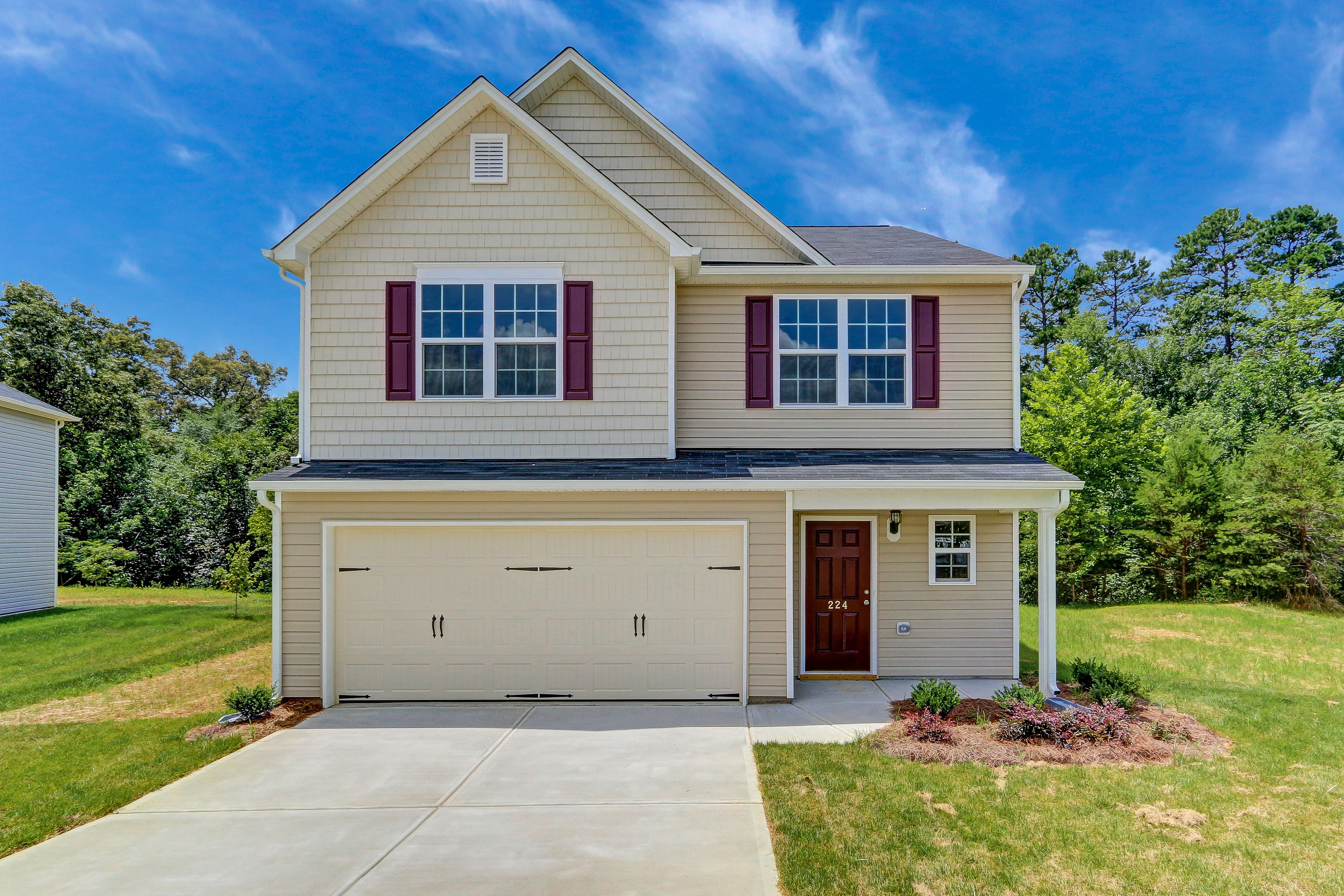On April 11, UCP, the Sunnyvale, Calif.-based parent of Benchmark Communities, agreed to merge with Greenwood Village, Colo.-based Century Communities, one of the housing industry’s most acquisitive builders over the past several years, in a deal valued at $336 million. The combined companies generated $1.3 billion in revenue last year, control about 25,000 lots, and are active in 10 states and 117 communities.
The Century-UCP deal is the latest in a spate of home builder mergers and acquisitions in the early months of 2017. On Feb. 1, Sumitomo Forestry Group agreed to pay $63 million to acquire a 70 percent stake in Edge Homes, one of Salt Lake City’s go-go builders. That’s the fifth deal over five years Sumitomo has made to expand in the U.S. housing market, where it operates under five banners in 10 states, and is about 80 percent toward achieving its goal of delivering 5,000 new homes per year.
The Sumitomo-Edge transaction occurred just days before Lennar completed its $643 million all-cash acquisition of Florida-based WCI Communities. That deal was the culmination of WCI’s resurrection, which dated back to August 2008 when, $1.8 billion in debt, WCI filed for bankruptcy protection from its creditors under Chapter 11.
Two weeks after the Sumitomo-Edge deal, Daiwa House USA completed its $251 million acquisition of 82 percent of Stanley Martin Homes, a 50-year-old builder serving Washington, D.C., and the Virginia/North Carolina metros of Richmond, Charlottesville, and Raleigh.
Because these deals may augur more M&A activity, here’s a look at how three large home builders—Century, Toll Brothers, and TRI Pointe Homes—managed recent acquisitions, from picking targets and integrating them into their businesses, to why these builders still see acquisition opportunities ahead.
Mergers and Acquisitions: Hitting the Ground Running
Since it launched in 2002, Century Communities has grown to be one of the housing industry’s top 25 builders, mostly through its acquisitions. During the 18-month stretch from mid-2013 through December 2014 alone, Century (No. 21 in this year’s Housing Giants rankings, page 32) purchased the assets of five companies, each of which gave it access to new markets. Last November, Century planted its flag in four southeastern states by investing a total of $18 million to acquire a 50 percent stake of Wade Jurney Homes.
Century Communities’ strategy isn’t complicated: It’s looking for instant presence. When it paid $57 million for Peachtree Communities in December 2014, it acquired Atlanta’s second-largest builder with 36 communities, 2,120 owned or controlled lots, and a 6 percent share of that market’s new-home sales. “We view each of our existing markets as ones that will outpace the U.S. average in terms of economic, job, and population growth,” explains Dale Francescon, who is Century’s co-CEO with his brother, Robert. “We are interested in expanding into markets that have similar attributes.”

Century Communities bought a 50 percent stake in Wade Jurney Homes, based in Greensboro, N.C. Among Wade Jurney’s offerings are homes for first-time buyers, including the Diamond Series (top) and the Platinum Series (bottom). (Photos: Wayne Miller/Everything From Above)

An acquired company’s lot position and its market’s land availability are also important criteria in Century’s decision-making before it pursues a deal. When asked what’s the toughest challenge in bringing two companies together, Dale Francescon responds, “It’s the people. Any transaction is going to involve change. And there is going to be change in processes, reporting, controls. For this reason, we are very cognizant of this issue and try to phase-in modifications.”
Like most expansion-minded builders, Century prefers to hold on to as many of the acquired company’s employees as possible. “Our strategy is to grow the businesses we acquire,” Francescon says. “As a result, we are typically hiring additional team members as well as providing advancement opportunities for existing personnel.”
But while it definitely wants to keep skilled management in place, Century isn’t making deals based on whether the previous owner wants to stay or go. It only bought half of Wade Jurney Homes (ranked No. 88 this year) because that builder’s founder, Wade Jurney, wanted to remain involved in the company’s operations and growth. Conversely, Century acquired complete ownership of Peachtree and Houston-based 13-community Grand View Builders (for which it paid $13 million) so the previous owners could monetize their investments.
Marc Jungers, who founded Grand View in 2009, is now co-owner of Jungers Farm, which breeds quarter horses, and invests in real estate. Century used the Peachtree acquisition as an opportunity to bring on former KB Home executive Rick Carruthers to run its Atlanta division.
While its Houston division foundered a bit last year—through the 12 months ending Dec. 31, 2016, it reported flat revenue, a $2.8 million pretax loss, its deliveries were off 28.1 percent, and its backlog was down 51.6 percent—Century’s acquisition strategy has been paying off: In 2016, home sales from 89 active communities were up 34.9 percent, earnings rose 24.2 percent, and deliveries increased 17.7 percent to 2,825 units.
So far, the Francescons have been directly involved in all of their company’s mergers and acquisitions. And, for the most part, those deals have gone relatively smoothly. The Peachtree and Wade Jurney transactions took less than 90 days from initial meeting to closing. This short time frame, says Francescon, “is very achievable if both parties are committed, reasonable, and organized.”
After a deal is made, pro forma plans and business plans are established up front. And, depending on the size of the transaction, the new company is migrated to Century’s software and reporting systems over time. Century Communities anticipates that it could take a year before an acquisition is fully integrated into its operations.
Century’s “combination” with UCP broadens its product and price mixes, and has the potential to become a national growth platform at a time when, according to Francescon, many smaller builders are constrained by their lack of access to capital and could be ripe for acquisition.
Mastering Big and Small in a Home Builder Acquisition
The best thing that happened in the early stages of TRI Pointe Homes’ $2.8 billion acquisition of Weyerhaeuser Real Estate Company (WRECO) was that it took nine months to close that deal, on July 8, 2014. The span between the initial agreement, in November 2013, and the closing “gave us time to work out our integration plan,” recalls Doug Bauer, TRI Pointe’s CEO.
In case you’ve forgotten what a high-wire act this acquisition was: TRI Pointe (ranked No. 11 this year) took ownership of a much larger builder with five separate home-building divisions in seven states and the District of Columbia, within which WRECO controlled about 31,000 lots. At the time of the deal, TRI Pointe and WRECO combined were annually delivering more than 3,400 new homes (the company closed 4,200 in 2016).
Every Monday during the integration period, TRI Pointe’s senior management conducted a conference call with WRECO’s operating presidents. That team also traveled to different markets to conduct “town hall” meetings with WRECO employees and supply partners. (Bauer says he still does an annual town hall meeting and regularly visits the divisions.)
Those powwows were something new for WRECO, which —as the home building division of the forest products giant Weyerhaeuser—typically operated under one-year business plans. “They had been the tail wagging the dog; now, they were the dog,” Bauer says. In this scenario—what Bauer calls a “minnow swallowing a whale”—he remembers surprisingly little friction or need for ego soothing during the early stages of the merger. That doesn’t mean there weren’t changes, though: 30 to 40 people in WRECO’s Seattle office, where it operates Quadrant Homes, left the company after the deal.
There was also “trimming” done at Pardee Homes to reduce overlap in Southern California with TRI Pointe. Bauer says that Pardee had created a “matrix organization” of 14 senior-level officials at its headquarters in El Segundo, Calif., “and we couldn’t see why we needed this [extra layer of management].”

Models by Pardee Homes, a division of TRI Pointe Group that builds in California and Nevada, include Casavia (top), and Artesana (bottom). (Photos: Courtesy Pardee Homes)

To make any M&A deal work, the combined company needs strong management, and TRI Pointe, Bauer says, views itself as “the best of the big and the small.” He and longtime friend Dan Fulton, who had served as CEO and president of Weyerhaeuser Co., were in sync about the importance of maintaining independent brands that “act like local businesses” and execute their plans in different markets. (Indeed, promoting “lifestyle brands” is one of TRI Pointe’s organizational pillars.) “We’re not like Lennar across the country,” Bauer says.
But TRI Pointe Group, the home builder’s corporate entity, is intimately involved in its divisions’ financial planning, IT, HR, and, says Bauer, “keeping the divisions’ balance sheets nimble.” The divisions must submit all land deals through a corporate land committee for approval by either Bauer or Tom Mitchell, TRI Pointe’s COO.
When asked who the point person on the WRECO deal was, Bauer replies, “you’re talking to him.” But as the WRECO deal took shape, Bauer consulted with a range of people—bankers, lawyers, his operations managers, and partners such as professional services firm Ernst & Young. It was Richard Moriarty, Citigroup’s global co-head of retail-corporate and investment banking, who educated Bauer about the financial instrument—a Reverse Morris Trust—that paved the way for TRI Pointe to buy WRECO. “We leveraged the entire organization,” Bauer says.
So far, this union appears to be working, if incrementally. Through 12 months ended Dec. 31, 2016, TRI Pointe Group reported a 2 percent increase in home sales, a 5.3 percent decline in net income, and 4 percent gain in deliveries.
Bauer says TRI Pointe intends to expand its divisions organically and take a “disciplined approach” toward M&A opportunities. Its criteria for pursuing another builder “depend on if it is in an existing market, where we’re looking for assets; or if we’re entering a new market, where we’re looking at people, the operating team, and assets,” he says.
For Home Building Company Acquisitions, Familiarity Breeds Trust
Boise, Idaho, was among the markets that Toll Brothers had looked at for possible expansion before the last housing downturn. So in early 2016, when Coleman Homes, one of Boise’s leading builders, let it be known through its investment consultant that it would consider acquisition bids, Toll wasted little time setting in motion the wheels to evaluate Coleman’s assets and operations.
Toll saw Coleman Homes—which since its launch in 2007 had delivered more than 1,000 new homes to the Boise market—as a solid vehicle to expand its initiative of serving a slightly lower price point in an upscale market. Coleman’s home prices averaged $303,000, and it had a 128-unit backlog. The builder was selling out of 15 communities and controlled 1,750 lots.
Toll Brothers (ranked No. 6 this year) already had valuable reconnaissance about its target, having acquired Coleman Homes’ Las Vegas division 19 years earlier. Tom Coleman ran that division and was active in Coleman Homes Boise, where Thomas Jr. was president. “Initially, it helps from a credibility perspective where two parties who have had a successful prior transaction step up to try a second deal,” says Ben Jogodnik, Toll Brothers’ managing director of mergers and acquisitions. “Both sides know they have a trusted deal partner.”

Boise-based Coleman Homes was acquired by Toll Brothers last fall. Offerings include The Harington (top), and The Hudson (bottom), both targeted to move-up buyers with kids. (Photos: Courtesy Coleman Homes)

Last October, Toll agreed to pay $85.2 million in cash for Coleman Homes Boise. That selling price reflects Toll’s confidence that the deal would turn out to be another good cultural fit. Beyond that hunch was insight from Gary Mayo, Toll’s group president, who manages its Las Vegas and Reno, Nev., operations, and who joined Toll Brothers as part of the Las Vegas transaction. Mayo had been an employee of Coleman Homes for 18 years prior to the Vegas deal. “This was very helpful for Toll,” Jogodnik says. “Gary could more easily identify the quality of Coleman Boise’s operations, and Coleman Homes could see that we look for senior management from the builder we’re merging with or acquiring to have a big role in the continuing operations.”
Toll Brothers prefers leaving existing management in place when it acquires another builder, but it also likes to pair that management with an experienced Toll employee. “That makes the integration process much easier for both sides, since there is a bit of a transition from operating a stand-alone small builder to being part of a larger operation,” Jogodnik says. The benefits from such pairings can be “tremendous,” he asserts, with the smaller company being buttressed by the bigger company’s infrastructure. “That allows the company being acquired the ability to do the parts of the business it loves the most—finding land, designing communities, and building and selling homes,” Jogodnik says, to say nothing of taking advantage of Toll’s “national marketing scope and brand recognition,” he adds.
Jogodnik says that Toll’s divisions in 20 states operate with “significant autonomy” to respond to local market conditions. But all of its divisions also have some measure of regional and corporate management behind them. “We remain consistent in that aspect of our business,” he says. Toll doesn’t enforce a timetable for when an acquired company should be fully integrated into the corporate whole. “It’s more important that the transition is done correctly,” Jogodnik says. “There is constant interaction between our senior corporate, regional, and local management. We don’t look at these new divisions any differently.”
Toll’s deal for Coleman Homes Boise was one of a number of builder mergers and acquisitions at the end of last year. Jogodnik expects more of the same for the industry going forward. “Postrecession, it’s been more difficult for small and midsize builders to obtain affordable financing for land and improvements,” he explains. As for Toll’s growth ambitions, he says the company is “always looking for quality companies to join our family.”
John Caulfield is a senior editor for Professional Builder's sister publication Building Design + Construction.
For more data and analysis of the 2017 Housing Giants, see these related articles:
Advertisement
Related Stories
Housing Giants
The 2024 Housing Giants Survey Is Now Open!
Complete the 2024 Housing Giants Survey to see if your company makes the cut in Pro Builder's rankings of the largest home building companies in the country
Housing Giants
Builder Rankings by Revenue: 2023 Housing Giants List
Pro Builder's annual Housing Giants rankings list provides a snapshot in time of builders’ perceived opportunities and challenges. These are the top 240 home builders in the nation, ranked by revenue
Housing Giants
Holding Back the Headwinds
Stormy market conditions strained the nation’s largest home builders in 2022, and they’re bracing for more uncertainty







